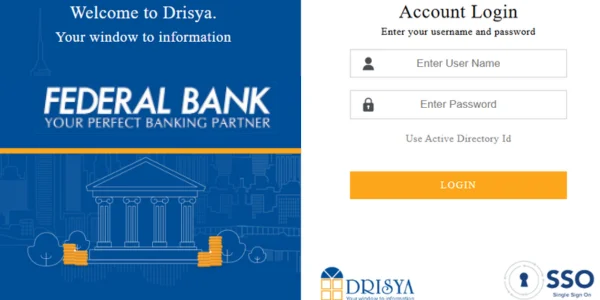The financial service industry has a lot of dependence on the Branch banking process. The system has presently undergone many kinds of changes over the time. And yet, its importance does not cease to exist. Be it in the national level, or the international ones, branch banking holds a lot of important. Here we come to the readers with the most specific advantages and disadvantages that you need to know about.

Advantages of Branch Banking
1. Physical Presence and Personal Interactions
Branch banking is desirable because customers may interact with bankers in person. Personal financial advice and complicated problem-solving are available in branch banking. Branch locations provide customers a local point of contact, increasing familiarity and accessibility. Unlike digital-only banking, branch banking builds trust and long-term relationships.Discussing tough financial issues in person is crucial. Meeting with a qualified banker helps you understand products and services. If they’re investing, planning, or managing complicated finances, direct engagement helps customers make informed decisions.
2. Sense of Security and Trust
Many consumers feel safe with branches. Banks with physical locations inspire confidence. This is crucial for elder generations acclimated to traditional banking.Branch presence inspires trust in many clients. They feel trustworthy and permanent when they can visit a bank. Branch locations demonstrate the bank’s dedication to consumers and affirm that their financial issues are genuine.Older generations raised with conventional banking feel safe. They are accustomed to visiting branches, chatting to bankers, and transacting in person. They feel at home at branches that reflect their familiar banking practices.Branch appearance indicates financial institution stability and longevity. In an era of rapid digital banking, branch presence is soothing. It reassures customers, especially those apprehensive of digital platforms, that traditional banking services are accessible.
3. Comprehensive Services in One Location
Branch banking offers several services in one location, simplifying financial administration. This centralised system handles accounts, loans, safe deposit boxes, and cashier’s checks. Finding a variety of financial services in one location is easy and time-saving.Easily opening several accounts is a big feature of branch banking. Savings, checking, and other accounts may be opened and maintained at the location. Customers may quickly set up accounts at this one location.Besides account management, branch banking assists with loans. On-site bankers may explain loan applications. Direct customer contact improves loan acquisition by providing tailored advice.
4. Access to ATMs and Financial Education
ATMs at bank branches simplify withdrawals, deposits, and balance inquiries. These physical centres provide automated services and financial education. Many banks provide conferences, seminars, and other services to assist people make good financial decisions.Branch ATMs make banking easier. Bank customers may quickly withdraw, deposit, and check account balances in person. This seamless ATM link enhances banking by offering self-service options for different client needs.Financial education is another benefit of branches. Many banks provide financial literacy instruction beyond transactional services. In-person workshops and seminars educate customers budgeting, investment, and debt management. These lessons help customers manage their money by educating society.
Disadvantages of Branch Banking
1. High Operational Costs
Drawbacks include expensive branch site maintenance costs. Physical bank premises need high rent, utilities, staff compensation, and office maintenance. These operational costs may raise consumer prices.Banks suffer with branch maintenance costs. Rent and utilities consume much of the institution’s budget. Operating expenses rise due to staff in-person services and knowledge. Banks spend on routine branch infrastructure repairs.Since maintaining physical buildings is costly, banks may need to compensate. Customers’ fees may be changed to do this. Account maintenance, transaction, and other service fees are examples. Client fees may rise as banks manage operational budgets.
2. Technological Lag and Digital Competition
Branch banking must adapt to digital financial technologies. With its convenience and 24/7 availability, online and mobile banking is a huge competitive threat. Digital efficiency exceeds branch efficiency.Financial management has changed with online and mobile banking. Digital platforms are popular because consumers can transact, check balances, and access various financial services from their smartphones. As consumers choose fast, easy online banking, branch banking is threatened. Branch banking must adapt to rapid technology. Digital platforms provide instant transactions, updates, and financial data. Branching takes time and effort, which may frustrate digital users.
3. Potential for Long Wait Times
Branch wait times, especially during peak hours, are bad. Customers that value speedy transactions may be disappointed.Long lineups at physical branches annoy time-conscious clientele. Busy people seeking financial services at peak hours may produce lineups. These circumstances test customers’ patience and disrupt their schedules, particularly time-sensitive ones.The excessive wait periods at branches may deter speedy transactions. If the in-person experience is bad, customers may migrate to online or mobile banking.Customer satisfaction may also suffer from long wait periods. Wait times may deter customers from branch banking. Discontent may hurt customer loyalty and bank recommendations.
4. Limited Personalization
Face-to-face branch banking is individualised but may not satisfy all clients. Automated and online solutions may outperform branch banking’s personalisation.The personal touch and direct customer connection make face-to-face interactions lovely. Addressing diverse audience demands is tough. In-person may not suit many clients. This limitation may harm customers seeking highly specialist financial services not available via branch networks.Personalisation is improved by automated technology and online platforms. These digital technologies use algorithms and data analytics to assess customer behaviour, preferences, and money. The result is more tailored and concentrated service beyond branch visits.Customers who want a pleasant, personalised experience pick automated systems’ convenience and efficiency. Online platforms provide real-time financial advice, product suggestions, and targeted marketing. This level of personalisation may not be possible in branch meetings.
5. Security Concerns
Robberies and breaches at bank branches raise customer and worker safety concerns. This issue underlines the necessity for rigorous security to prevent risks and safeguard everyone.Robberies plague physical branch locations. Criminals might target branches because to their accessibility and exposure, threatening staff and customers. Such events may produce lasting fear and worry, thus banks must prioritise security.Modern branches face cyberattacks and data theft. Technology in banking increases the risk of unlawful access to sensitive customer data. Client privacy and bank trust are compromised by cybersecurity breaches.
Conclusion
In brief, it should be mentioned that in spite of the disadvantages, branch banking happens to be a very important part of the financial process. For the sake of a comprehensive range of services, this system is upgraded time to time. If the concerns about cost and the subsequent competitions are considered and taken care of, then for a long time, branch banking service will be having its relevance in the financial industries.
Recommended
- CMS Info Systems Pvt Ltd Company
- Axis Bank Company
- DBT (Direct Benefit Transfer) Scheme Advantages and Disadvantages
- Demonetisation in India: Advantages and Disadvantages
Anantha Nageswaran is the chief editor and writer at TheBusinessBlaze.com. He specialises in business, finance, insurance, loan investment topics. With a strong background in business-finance and a passion for demystifying complex concepts, Anantha brings a unique perspective to his writing.


